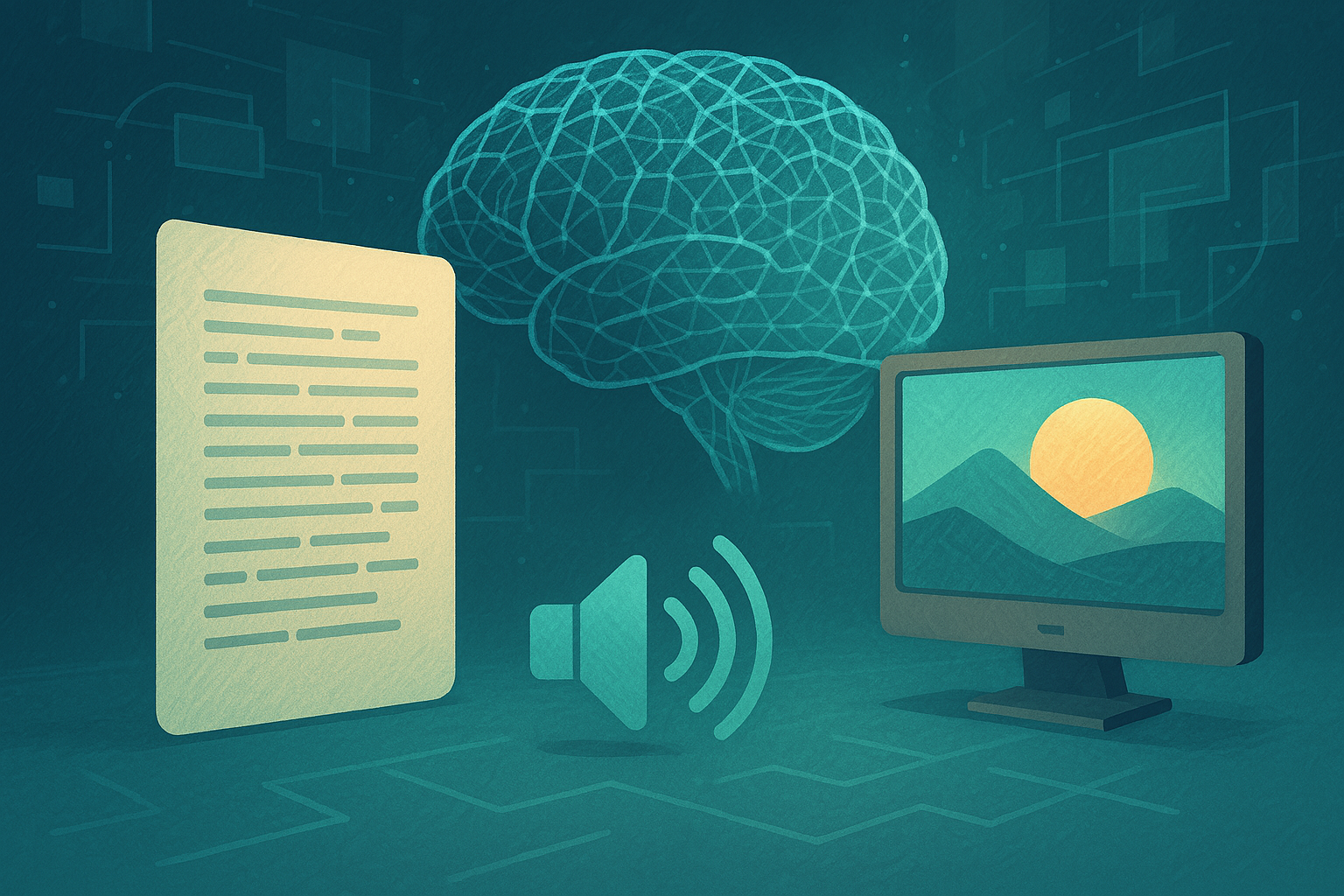Hello, I’m Mana.
Today, I’d like to share some insights about the core technologies shared by different types of generative AI models—including those that generate text, images, and audio.
Generative AI is no longer limited to text. It now spans image generation, voice synthesis, video, and even 3D content.
Interestingly, these different formats share some fundamental mechanisms and design principles.
In this article, I’ll highlight three key technical perspectives that help explain how generative AI models work across different modalities.
🔍 1. Shared Process: Learn Patterns → Generate Output
Most generative AI models follow a similar process, regardless of format:
(1) Learn patterns from data
- 📝 Text → Grammar, vocabulary, writing style
- 🖼️ Images → Color, shape, composition
- 🎧 Audio → Frequency, tone, rhythm
All of them rely on large-scale data to detect patterns and structures in their respective domains.
(2) Generate new content based on learned features
- ChatGPT: Generates natural language text
- Stable Diffusion: Creates visual images
- Speech synthesis models: Reproduce human-like voices
Despite their differences in format, they all function as statistical prediction engines, generating content that “looks or sounds right.”
📐 2. Shared Evaluation Metrics
There are common ways to evaluate how good generative AI output is—regardless of the type:
✅ Quality
- Text: Coherence, logic, grammar
- Image: Clarity, natural composition, visual consistency
- Audio: Smoothness, clarity, natural intonation
The most important measure is whether the output feels realistic and acceptable to humans.
✅ Diversity
- Can the model generate a variety of outputs from the same input?
- Does it show creativity and flexibility?
Even high-quality models may feel repetitive if they always produce similar results.
Diversity and novelty are important for making content engaging and useful.
🌐 3. The Rise of Multimodal Models
Recently, we’ve seen more multimodal models that can handle multiple data types together.
Examples:
- GPT-4 with Vision: Understands and generates text based on images
- Whisper + TTS: Transcribes speech to text and converts text to speech
- Image Captioning: Describes images in natural language
These models process different formats using a shared latent space of features, showing that even across modalities, the underlying techniques can align.
🎯 Why It Matters
Understanding the common foundations of generative AI helps us grasp the bigger picture—not just individual tools.
By recognizing patterns that apply across text, images, and sound, we can better appreciate the power—and limitations—of this technology.
Let’s keep exploring and learning together! 📘



Comment